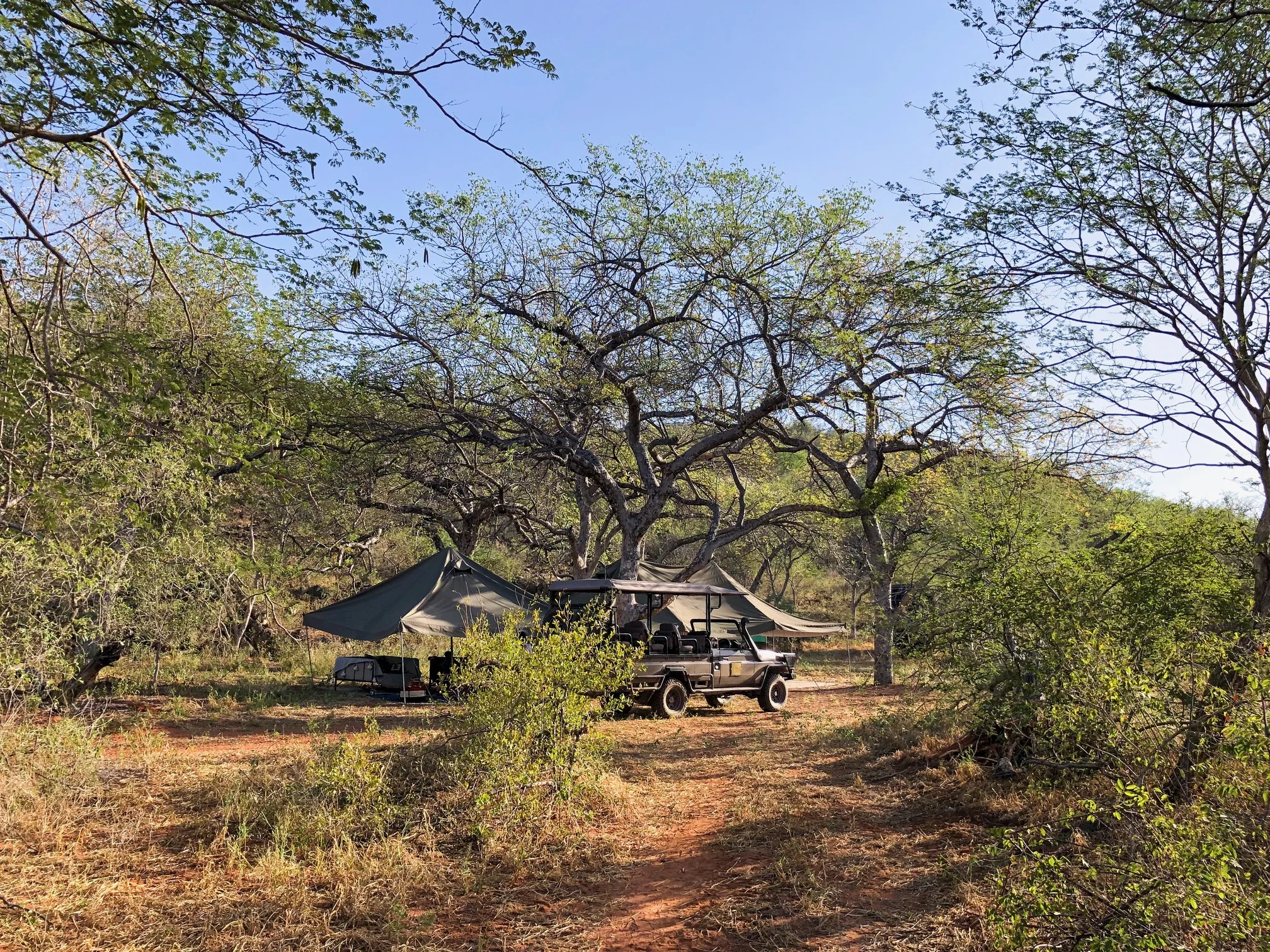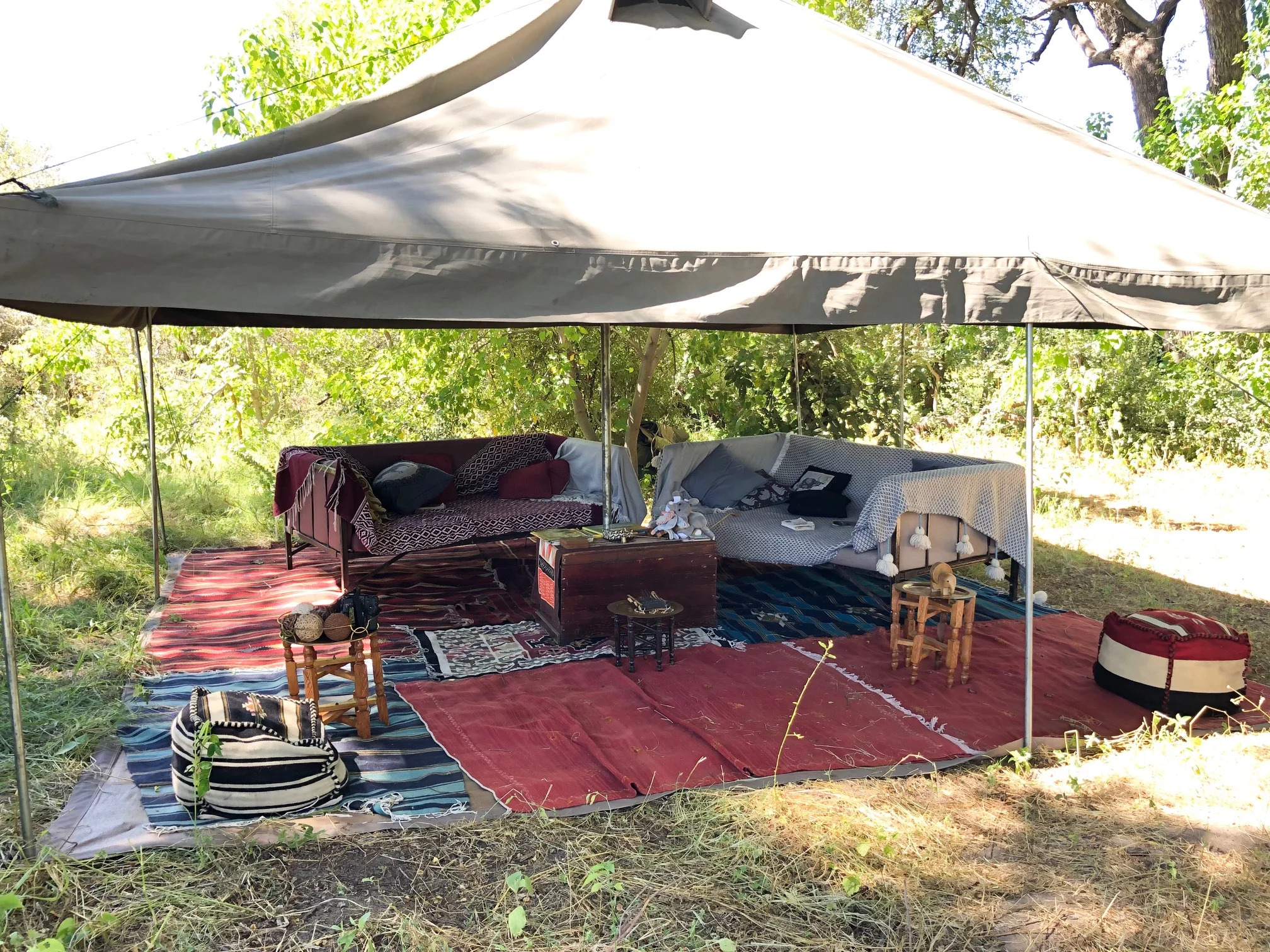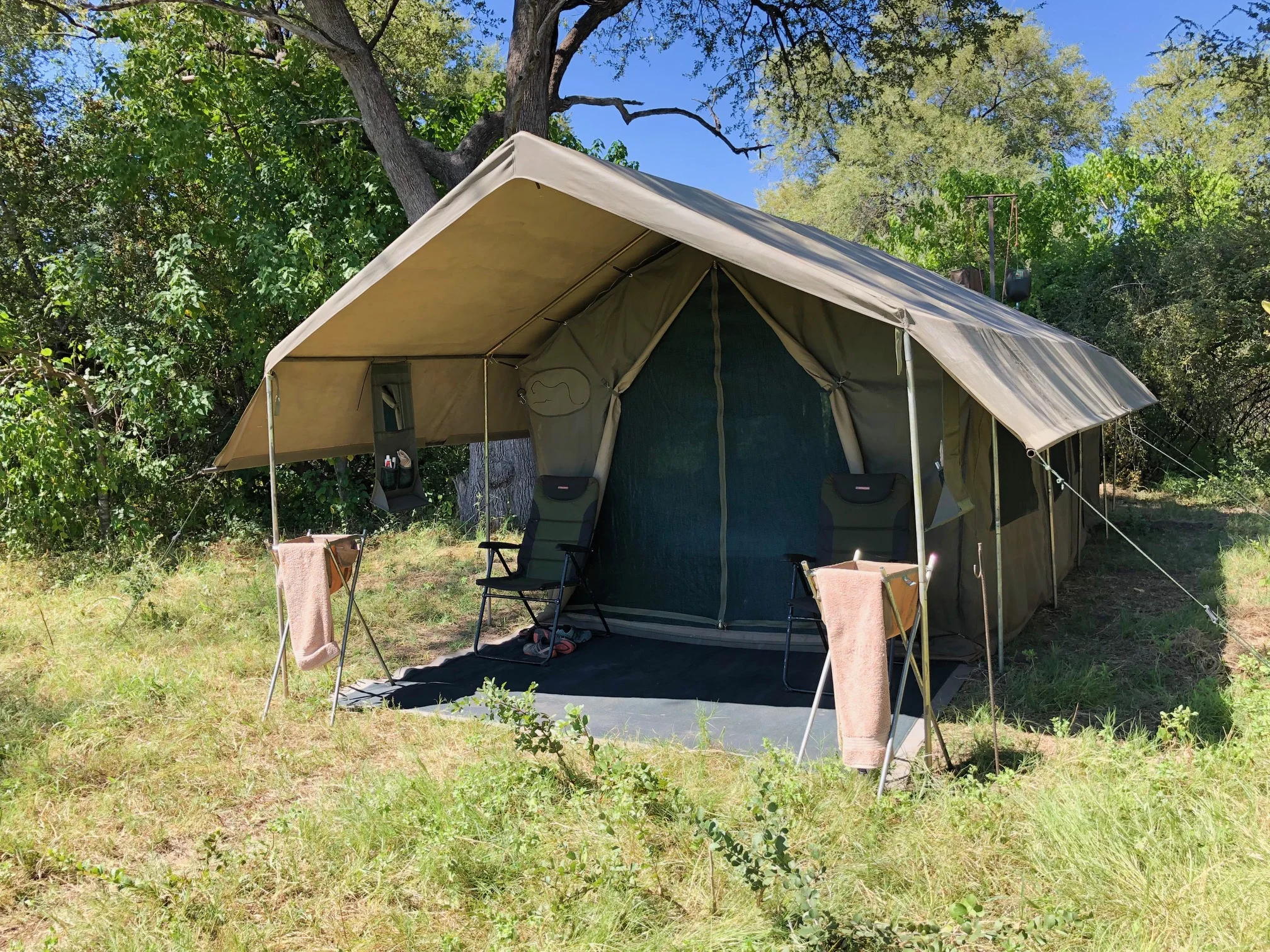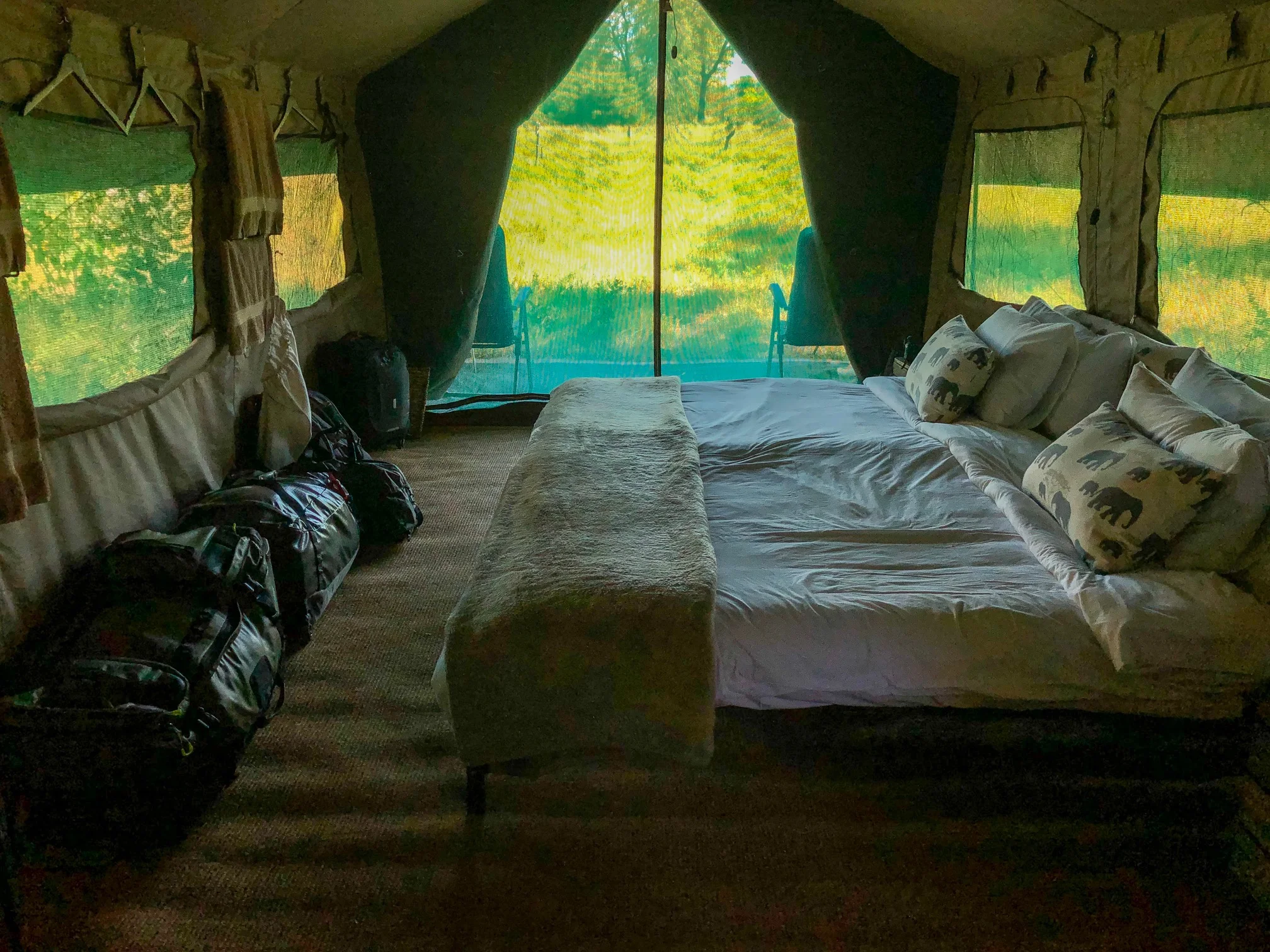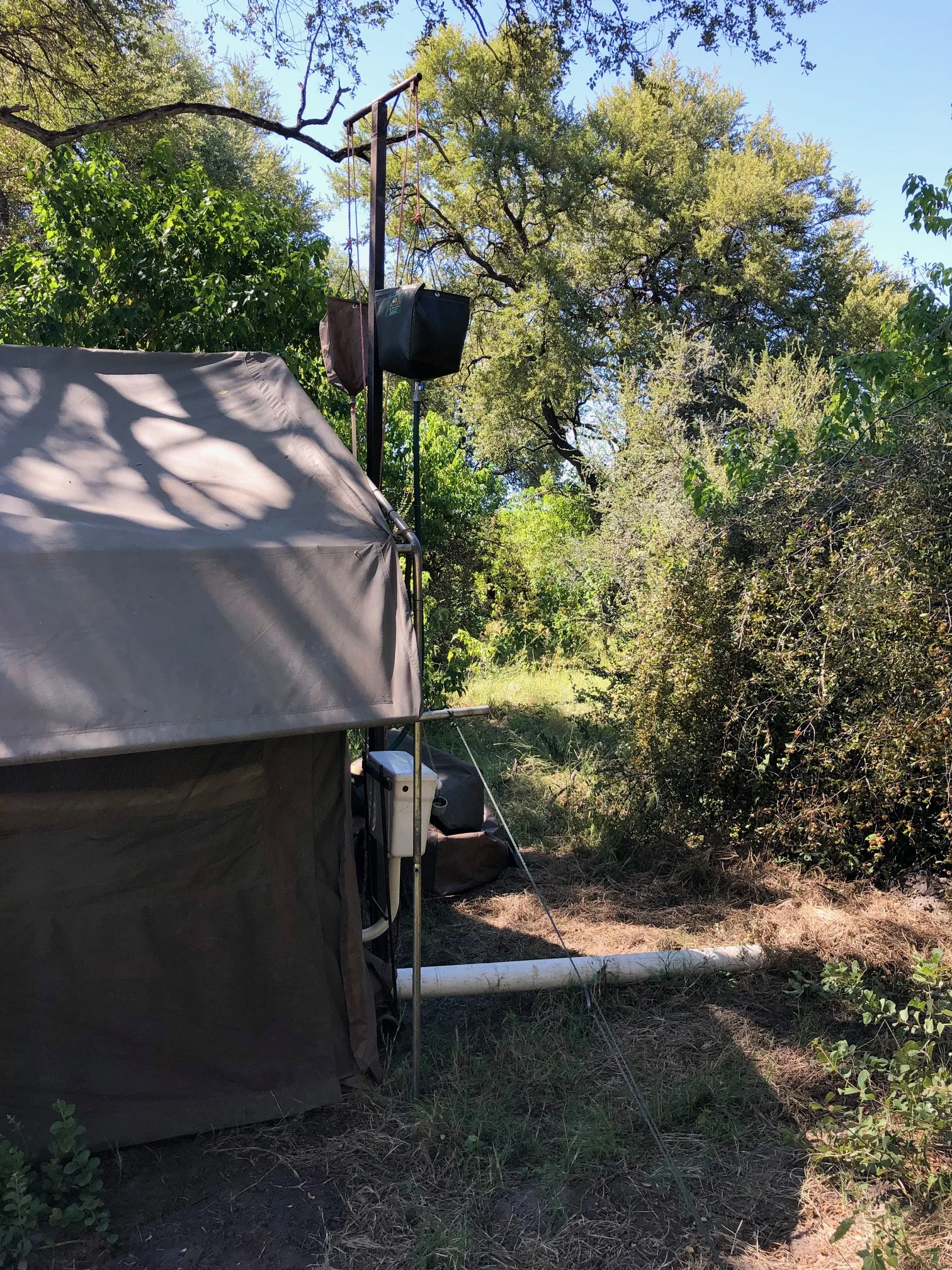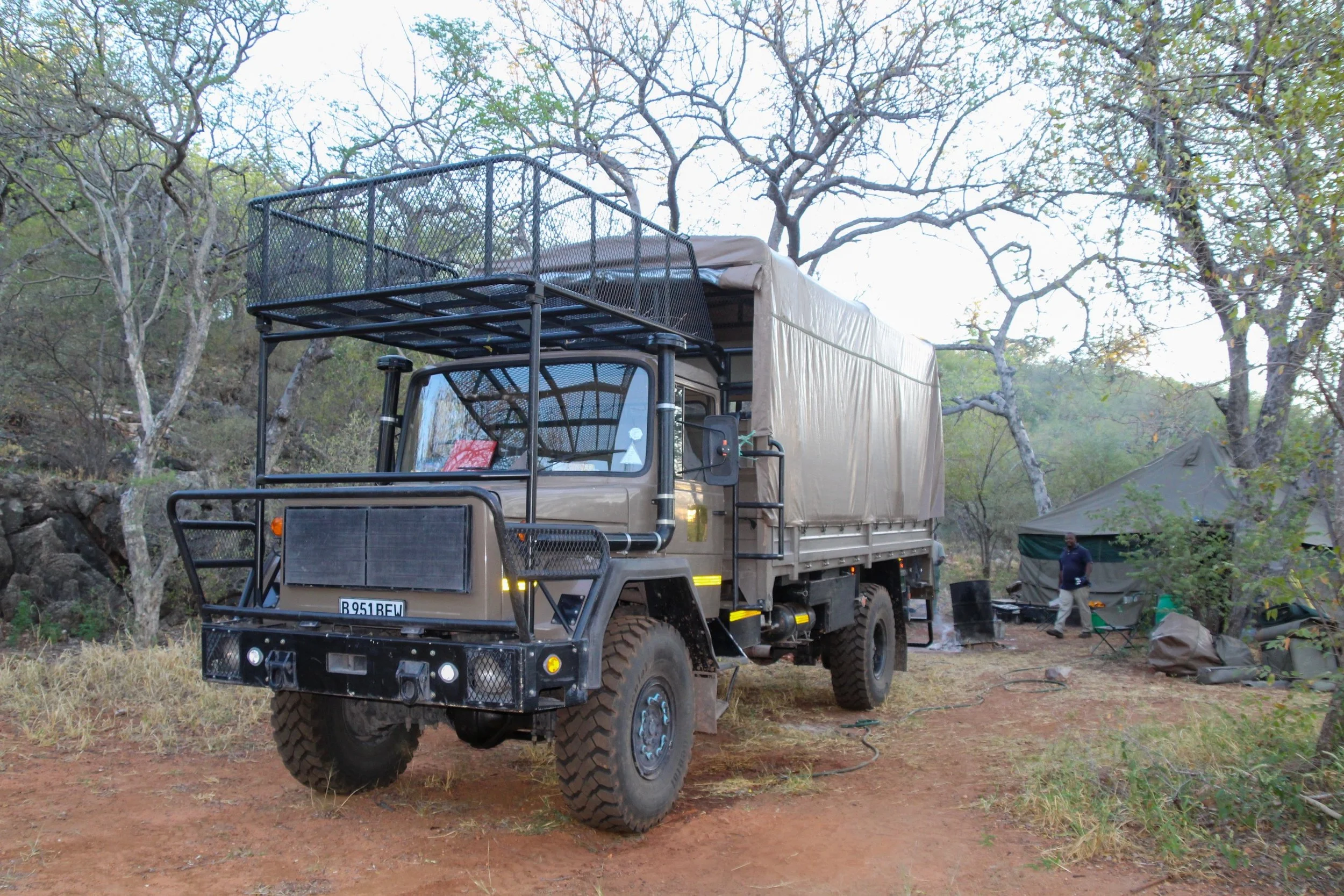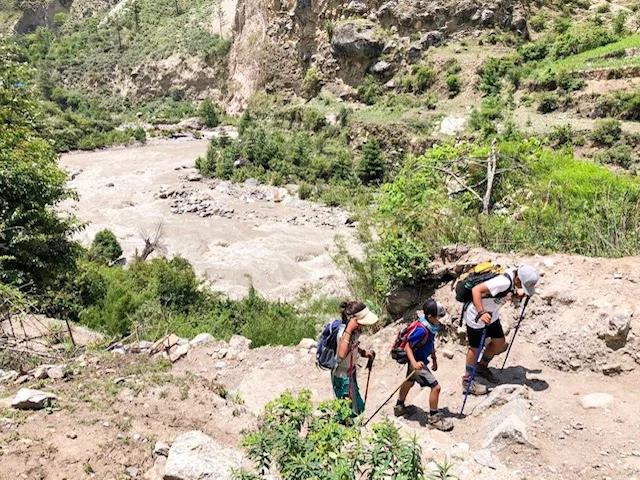Botswana and the KhoiSan: Arriving in the Kalahari Desert
This is the first post of a 4-part series on our experience in the remote Kalahari Desert of Botswana with the “Bushmen” or KhoiSan people from the Ju!Hoansi Tribe back in April 2019. See our Instagram Story Highlights Botswana here for quick videos, though a longer video will be created in the next several weeks and shown on our YouTube Channel (please subscribe here). Our website is the best place to sign-up for email updates of new posts! Thank you for sharing in this adventure.
—-
Cover Photo: This was actually taken on the last day after we had spent some time with this crew. Kavaa is the man in front (in Western clothes). What a remarkable group of people…
—-
When I was about seven years old, my dad had shown me the movie, “The Gods Must Be Crazy.” I don’t remember much of the movie other than the plot—a soda bottle dropped from a small Cessna plane and into the hands of an indigenous African community who didn’t know what to do it with it and eventually, wanted to be rid of it. I remember that the people in the movie spoke in a language with “clicks” and I didn’t know whether it was a real language or made-up. Regardless, I still have a memory of finding the movie comical, until I saw others laugh too. At that time, I couldn’t discern whether the audience around me (mostly adult family members, as I recall), was laughing appropriately. My moral compass vacillated between whether the audience was laughing rightfully at these people’s endearing innocence and at the thought of a soda bottle being so foreign; or whether the audience was laughing at the culture and being entertained by their ignorance. In the absence of clarity, at age seven, I erred on the side of moral caution. I rebuked my dad, declared the movie was racist, and never watched it again. Little did I know that 32 years later, I would accompany my family to the Botswana bush to meet these people, who were in fact very real--the KhoiSan Bushmen of the Ju!Hoansi—the extended family and tribe of the leading actor of the movie.
While in Switzerland, Kapil and I were cementing our Africa itinerary which included 11 countries in 88 days. We worked with a safari expert, who later became a good friend, Phil, and he spent time learning what was important to us. Of course, seeing animals in their wild habitats was important to us, but beyond safari, we shared that we care about people. We see the world as a giant classroom filled with a community that has much to teach us. We expressed that we were not that into touristy culture visits that often seemed contrived and exploitative, but rather interested in connecting with people and learning indigenous ways. To our amazement, Phil told us of a colleague, Rob, that he had just connected with who took a few people about once a year to a very special tribe in the Western Kalahari Desert. Rob has a special relationship with this community, spanning over a decade, evidenced by one of the wise old men even officiating his wedding in the traditional way! We jumped on it, frankly without spending time to fully research what we had just committed to. Three days in the middle of the Kalahari Desert with indigenous people with the oldest bloodline in the world? Yup. Count us in.
The only efficient way to get to this part of the Kalahari is to charter a small plane (only a few charter companies fly there). You can also drive for a few days from the closest big city (relatively), Maun. We flew into a very small village called Xai Xai (pronounced with clicks for the letter “x”), where the landing strip must be checked for cows and other animals before any plane is cleared to land. After a skillful landing, we hopped off and were greeted by Phil, Rob, and some people from the village (mostly kids).
We loaded the open safari jeep with our luggage and drove for another 40 mins or so to what would be our home for the next few days—a mobile safari camp. During our safaris in Tanzania and Kenya, we stayed mostly in permanent or semi-permanent lodges. In other words, they were all partially, if not fully, comprised of permanent structures. Some of the rooms looked like glamping (glamour camping) tents, but none were truly mobile…so we didn’t know what to expect.
We drove into a small clearing in the bush and saw an open-tented outdoor living space that looked like something out of a travel magazine. It was beautiful. This was to be our dining and lounge areas for the next several days and we couldn’t have felt luckier! The Golden Africa Safari team was so kind and warm…we felt right at home as our jaw dropped on how they put this “GLAMP” together for us.
We were divided into two tents each with a small toilet and a shower (both were connected to separate, manually fillable buckets outside of the tent). Each tent had proper beds, complete with comfortable pillows and bedding. Outside of the tent, on our “porch” so to speak, was a canvas basin filled with fresh water twice daily. That was our washing water for teeth, hands, and was later dumped into the toilet flush bucket. Honestly, it was luxurious, and it was all transported in a large retired-army supply truck that was affectionately dubbed, “Her Majesty.”
Our mobile “glamp” site.
The common living space that had already been “lived-in” by the time we took this picture.
This was the sleeping tent…but you can tell from the greenery this photo was taken when we moved to the Okavango Delta.
Inside one of the tents—very comfortable!
The buckets: Brown was for the shower and could be filled with hot water and the black one was for grey water that could be used to flush down solid waste into a waste container. One night, an elephant tried to drink from this and knocked it over—but that is another story :)
Her majesty :)
The Indian Chutney Incident
After lunch and teatime, we met with our local liaison with the Ju!Hoansi tribe, Kavaa. Born and partially raised in Namibia, Kavaa is a descendent of the Herero people. Between 1904-08 during what was considered the first genocide of the 20th century by the Germans in Namibia, Kava’s family escaped Namibia and entered into Botswana as a refugee along with Nama and San people. Many of the San, Nama, and Herero refugees lived in one community. Generations later, Kava, grew up with the Ju!Hoansi and thus speaks Setswana, Ju!Hoansi, Herero, and English fluently.
In our culture, we don’t enter as guests into a home empty-handed. We had found some authentic Indian mango chutney in Tanzania and saved a jar as a gift for this community. I asked Kavaa to tell me who the elders were in the group and we would offer it as a present. Kavaa and Rob explained that the San people are an egalitarian community. There is no hierarchy and therefore no deference given to “elders” except that they are often experienced in some cultural aspects of entering trances and communicating with ancestors. The way they showed affection was teasing each other, and in this, no “elder” was spared. We also learned that because they live in a collective community, no one person is to take credit above others. If they go out hunting in the Bush and someone kills an animal, when they return back to the nomadic village, they will not boast their skill. On the contrary, they will offer expressions of self-deprecation, like “I’m a bad hunter” or “it was an O.K. day and would have been better if I was a better hunter,” until fellow hunters will show the village the kill and solicit help to prepare the meat!
Though the background was so helpful and interesting, I was thoroughly confused as to who I would hand this chutney jar to. Kavaa suggested that I give it to one of the older females in the group, but that it would be shared among the entire community.
With that, we excitedly walked no more than five minutes to the clearing with several grass huts where about 30 Ju!Hoansi were staying at the moment. They were all sitting around the area where a goat (gifted to them by Rob) was cooking and its skin drying for later use. We started greeting everyone with a traditional greeting, in Ju!Hoansi language and then proceeded to join them on the sandy dirt ground. Kavaa pointed to the woman I should offer the chutney to and I handed it to her and then had him translate, “thank you for sharing your culture with us and this is a gift for all of you, from our culture.” I offered it to her and joined the others by the fire near the goat.
Side Note: If you don’t know what chutney is, then you are missing out on some flavorful goodness. Think of it as a sweet, yet flavorful, relish used to add some umph to more bland food. Mango chutney, in particular, has the sweetness of ripened mango and the spiciness of the cardamom, garam masala, and peppers that are mixed into it. At our house, one jar can easily last us several weeks.
About five minutes later, I heard Phil and Rob chuckling and looking at the chutney jar which was now being passed around the entire circle. Everyone was drinking the authentically strongly spiced chutney from the jar or licking some off of their hands and then making horrible faces! They hated the chutney and if I was drinking it from a jar, I’d hate it too! It was too late to intervene, as the jar was practically empty all I could do was smile and apologize for the spiciness! It was absolutely hilarious and an important reminder that in this context, we couldn’t take anything for granted.
Despite our horrible gift, we were still invited to sit down with them and feast on some of the smoked goat. Likely a reciprocal gesture of generosity, we were offered the best part of the goat, cooked brains straight from the smoked goat’s head. We, of course, accepted this treat and gulped down the warm mushy substance. What would have made it taste even better? A dab of mango chutney!
Goat hide and meat. This photo was actually taken on the second day after the hide had dried and much of the meat had been consumed.
Sharing some of the goat brains with us!



